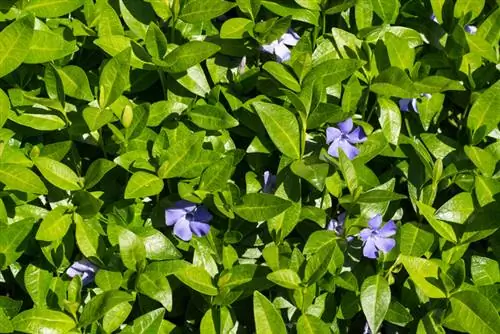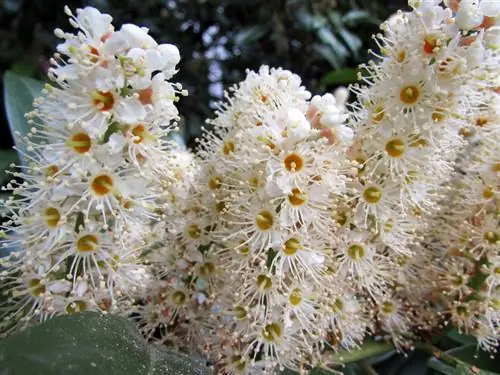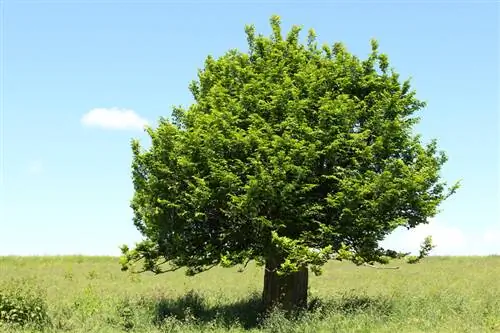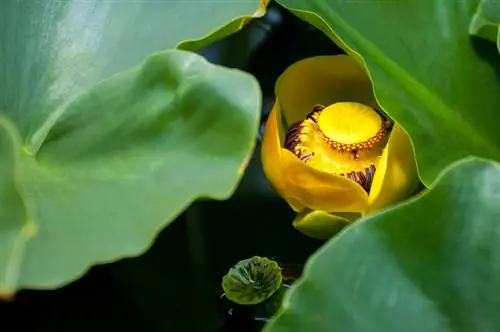- Author admin [email protected].
- Public 2023-12-16 16:46.
- Last modified 2025-01-23 11:20.
The small periwinkle, like its large-leaved relative Vinca major, is poisonous, but offers several advantages as a garden plant. That's why the various varieties of Vinca minor are particularly often used as flowering ground cover in private gardens.
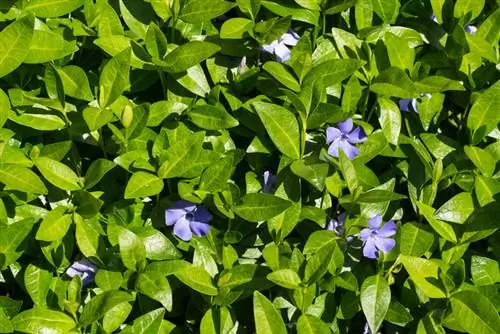
What is the small periwinkle and what properties does it have?
The small periwinkle (Vinca minor) is a creeping subshrub from the dogpoison family. It grows 10-20 cm high and blooms from March to June with light blue to purple funnel flowers. The plant is poisonous and prefers partially shaded locations.
Key facts about the small periwinkle:
- Plant family: Apocynaceae (dog poison family)
- Growth habit: creeping subshrub, branches with flowers usually tightly ascending
- Growth height: between 10 and 20 cm depending on location and variety
- usual locations: deciduous and mixed forests, partially shaded parks, often found as cultural refugees
- Flowering time: between March and June
- Flower color: in wild forms usually light blue to violet
- Flower shape: funnel-shaped with 5 sepals
- Leaves: opposite, lanceolate and shiny
- Vinca minor is perennial
- Use: formerly as a medicinal plant (caution: very controversial today!)
- Attention: The small periwinkle is poisonous to people and animals
- Propagation: vegetatively, seed formation is rare in Central Europe
Choose the right location in the garden for the small evergreen
The small evergreen grows without any problems even in relatively shady areas of the garden. However, the location should not be too dry if possible. It may help to prepare the soil beforehand for planting this ground cover. In addition, on typically dry slopes, it can make sense to irrigate a carpet of small periwinkle plants during periods of extreme drought.
Easily propagate the small periwinkle yourself
The propagation of the small periwinkle is not very complicated, although this plant only very rarely produces seeds in Central Europe. You can use the following methods when propagating vegetatively:
- wait for the plants to spread on their own
- separate and transplant rooted side shoots/offshoots
- Cut cuttings and let them root
Tip
If you have a little patience and don't immediately need a closed carpet of small periwinkle plants, then you can simply choose a slightly larger planting distance when planting. Loosen the soil between the plants a little and fertilize the soil with a little compost to make it easier for lateral cuttings to root.

